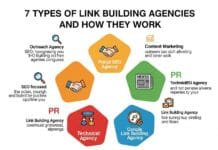In today’s competitive architecture industry, establishing a strong online presence is crucial for attracting clients. Many potential customers begin their search for architectural services online, so it’s essential to position your firm as a trusted and visible option. Search Engine Optimization (SEO) can make all the difference by improving your firm’s visibility on search engines like Google. When implemented effectively, SEO has the power to drive targeted traffic to your website, showcase your portfolio, and build credibility in your field.
Take a look at how expert firms like Third & Arch can help leverage strategic online tools to increase your firm’s visibility. By optimizing their digital presence, firms can stand out from competitors and attract their ideal clients. If you’re ready to give your architecture firm an edge, it’s time to explore how SEO can transform your business.

What Is SEO and Why Does It Matter for Architecture Firms?
Search Engine Optimization (SEO) is the process of improving your website’s visibility in search engine results. When a prospective client types “architecture firms near me” into a search engine, SEO determines whether your firm appears on the first page—or gets lost among competitors.
For architecture firms, ranking high on search results is more than a numbers game. It’s about ensuring the right people discover your work. By optimizing your website with the right keywords, content, and technical structure, you can attract local clients who are actively searching for your services.
Benefits of SEO for Architecture Firms
1. Increased Online Visibility
SEO helps your website rank higher in search engine results, which means more people can find your firm. Increased visibility not only attracts more visitors but also improves your chances of connecting with potential clients.
2. Showcasing Your Portfolio
Your website serves as a virtual showroom for your work. With the right SEO strategies, you can direct visitors to specific project pages, ensuring they see the projects that best represent your expertise and style.
3. Targeting Local Clients
Local SEO is particularly beneficial for architecture firms. By optimizing your site for local search terms, such as “residential architects in [City],” you can attract clients who are actively looking for firms in your area.
4. Building Credibility
Websites that rank high in search results are often perceived as more trustworthy. By investing in SEO, you’re not only gaining visibility but also positioning your firm as a credible authority in the field.
Key SEO Strategies for Architecture Firms
Optimize Your Website Structure
Your website should be easy to navigate and fast to load. A well-structured site improves user experience and is favored by search engines.
- Use clear headings and subheadings.
- Ensure your site is mobile-friendly.
- Optimize page speed.
Research and Use Relevant Keywords
Keywords are the foundation of any SEO strategy. For architecture firms, this means using terms that potential clients are likely to search for, such as “modern home design,” “sustainable architecture,” or “commercial architects near me.”
- Use tools like Google Keyword Planner to identify high-traffic keywords.
- Naturally incorporate these keywords into your content, meta descriptions, and image alt texts.
Create High-Quality Content
Content marketing plays a significant role in SEO. Creating blog posts, guides, and project showcases can help drive traffic to your website.
- Write blog posts about topics like “Top 5 Home Design Trends of [Year]” or “How to Choose the Right Architect for Your Project.”
- Update your portfolio regularly with detailed descriptions of completed projects.
- Include visuals such as high-quality images and videos to engage visitors.
Leverage Local SEO
Since most architecture firms operate within specific regions, local SEO is essential.
- Claim and optimize your Google Business Profile.
- Include your firm’s name, address, and phone number on every page of your website.
- Encourage satisfied clients to leave reviews on Google and other review platforms.
Build Backlinks
Backlinks, or links from other reputable websites to yours, signal to search engines that your site is trustworthy and relevant.
- Reach out to industry publications and offer to write guest posts.
- Partner with complementary businesses, such as interior designers or construction firms, for mutual link-building opportunities.
Common SEO Mistakes to Avoid
Even the best intentions can lead to SEO missteps. Avoid these common pitfalls:
- Keyword Stuffing: Overloading your content with keywords can harm readability and lead to penalties from search engines. Use keywords naturally.
- Neglecting Mobile Optimization: With most users browsing on mobile devices, a non-mobile-friendly site can lose potential clients.
- Ignoring Analytics: Regularly monitor your website’s performance to see what’s working and where you can improve.
- Skipping Meta Descriptions: Meta descriptions help search engines understand your content. Skipping them can hurt your ranking.
Tracking Your SEO Success
To understand whether your SEO efforts are paying off, track key metrics such as:
- Organic Traffic: The number of visitors who find your site through search engines.
- Keyword Rankings: How well your site ranks for targeted keywords.
- Bounce Rate: The percentage of visitors who leave your site after viewing only one page.
- Conversion Rates: The number of visitors who take desired actions, like filling out a contact form.
Using tools like Google Analytics and Google Search Console can provide valuable insights into your site’s performance and areas for improvement.
How to Get Started with SEO
If you’re new to SEO, the process may feel overwhelming. Here’s how to get started:
- Audit Your Website: Evaluate your current site to identify strengths and weaknesses.
- Set Goals: Determine what you want to achieve with SEO, whether it’s more traffic, leads, or project inquiries.
- Develop a Strategy: Create a plan that includes keyword research, content creation, and technical optimization.
- Monitor and Adjust: SEO is an ongoing process. Regularly review your results and adjust your strategy as needed.

Conclusion
SEO is a powerful tool that can help your architecture firm stand out in a crowded marketplace. By increasing visibility, attracting local clients, and showcasing your portfolio, you can drive more traffic to your website and grow your business. Whether you’re optimizing your site’s structure, creating engaging content, or targeting local search terms, every step you take brings you closer to connecting with your ideal clients.
With the right strategies in place, your architecture firm can gain a competitive edge and thrive in the digital age. Now is the time to invest in SEO and unlock its full potential for your business.





